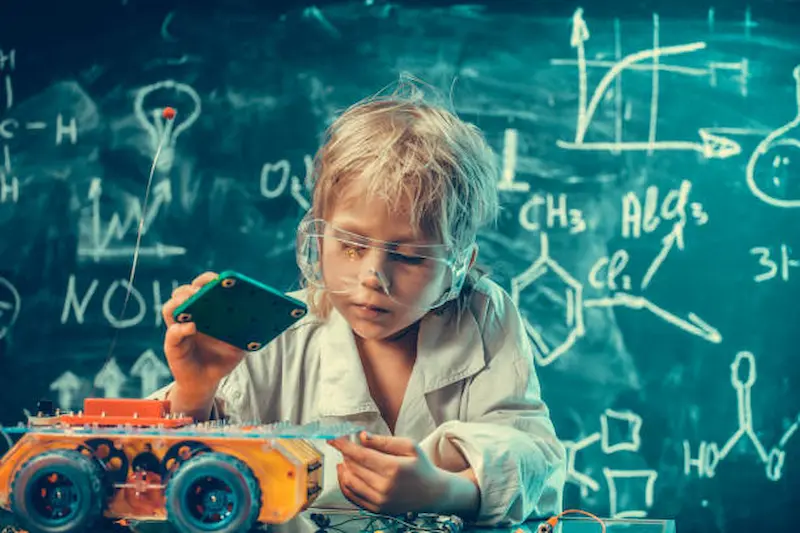Humans have always been drawn to robots for their distinct charm, whether it be through ancient automatons or cutting-edge technological marvels. Their capacity to bridge the gaps between the realms of science, art, and ordinary life piques our curiosity and amazement. This article delves into the interesting world of robots, covering their history, myriad applications, and societal ramifications. It aims to promote a better awareness of the role that robots play in our lives and the seemingly endless possibilities that lie ahead for them.
This blog will take young readers on an engaging robotics adventure. These fascinating facts have been specifically picked to pique children’s interest in science and technology while providing them with a fun and educational window into the world of robots.
Table of contents
The Robot Revolution

The Robot Revolution refers to the increasing role of automation and artificial intelligence (AI) in various industries, a concept relevant to discussions on AI for kids. Robots are transforming manufacturing, healthcare, logistics, and more. They enhance efficiency, reduce labor costs, and perform tasks that were once manual, improving overall productivity. However, this revolution raises questions about the impact on the job market, the need for retraining, and the ethical considerations of AI. Understanding this shift is crucial for adapting to the changing landscape of work and technology.
13 interesting and fun Facts on robots
1. Ancient Robotics:

Robots have a surprisingly ancient history. Mechanical automatons were created in civilizations like Greece and Egypt for various purposes, including entertainment and religious activities, which can be particularly engaging activities for kids. These early robots offer a fascinating glimpse into the origins of automation, laying the foundation for the complex robots we have today.
2. Robot Origins:
The term “robot” was first coined by Czech playwright Karel Čapek in his 1920 play “R.U.R.” (Rossum’s Universal Robots). The word originated from the Czech term “robota,” which signifies drudgery or forced labor. At the time, Čapek couldn’t have foreseen that this word would come to represent an entire field of technological advancement.
3. Robotic World War I:
“Robotic World War I” signifies the integration of early robotic technologies into warfare during the 20th century, a significant shift in military strategies and tactics.
Surprisingly, the first known instance of a robot used in battle dates back to World War I when the French created the remotely controlled “Goliath” tank.
4. Robot in Space:
A pivotal moment in robotics occurred in 1957 with the launch of Sputnik, the first artificial satellite by the Soviet Union. This marked the beginning of human space exploration and initiated the use of robots as our eyes and hands in the far reaches of space.
5. Robotics in Surgery:
The da Vinci Surgical System, a groundbreaking development in the medical field, ushered in a new era of minimally invasive surgery. This robotic system allows for precision and dexterity beyond human capability, leading to improved patient outcomes and setting the stage for the future of surgical techniques.
6. Robot Musicians:

The fusion of technology and art, which can be an exciting avenue for art for kids, is exemplified by robots like “Shimon,” which can spontaneously create jazz music alongside human musicians. This creative collaboration highlights the potential for robotics to enhance artistic expression, making it an engaging and educational experience, and redefining the boundaries of human-robot interactions.
7. Robotic Pets:
Companies like Sony have created robotic pets, such as the Aibo robot dog. These robots are designed to mimic the behavior of real animals, offering companionship and entertainment to those who may not be able to have real pets. This advancement shows the remarkable strides we’ve taken in creating lifelike robots.
8. Robots in Deep-Sea Exploration:
Remote Operated Vehicles (ROVs) and Autonomous Underwater Vehicles (AUVs) have become indispensable tools for exploring the depths of the ocean.
They capture stunning footage of underwater landscapes and collect crucial data, enabling us to better understand our planet’s most mysterious and uncharted regions.
9. Robotic Farming:
The integration of robots into agriculture has led to greater efficiency and productivity. Autonomous tractors, drones, and robotic systems handle tasks such as planting, harvesting, and monitoring crops. This advancement not only boosts agricultural output but also reduces the industry’s reliance on manual labor.
10. Robot-Assisted Rehabilitation:
Robots like the exoskeleton “HAL” have emerged as powerful tools in healthcare. They assist individuals with mobility impairments in regaining their ability to walk. This fusion of robotics and healthcare is transforming the field of rehabilitation and offering new hope to those with physical challenges.
11. Robot Comics:
Some robots, like “Janken,” have been programmed to play rock-paper-scissors. What makes them unique is that they are programmed never to lose! These interactive robots bring a playful and fun dimension to human-robot interactions.
12. Robots on Other Planets:

Robots have played a pivotal role in exploring celestial bodies beyond Earth. Mars rovers like Opportunity, Curiosity, and Perseverance have been instrumental in examining the Martian landscape and searching for signs of past life. These robots pave the way for future human missions to the Red Planet and inspire our quest to unlock the secrets of the cosmos.
13. Robot Ethics:
As robots become increasingly integrated into our daily lives, discussions on robot ethics have become imperative, particularly in the context of robotics for kids. This field addresses complex questions related to the ethical implications of AI and robotics, including issues of responsibility, rights, and accountability. It offers a critical perspective on the evolving relationship between humans and machines in our technologically advanced world, emphasizing the importance of instilling ethical considerations in young learners as they interact with robotic technologies.
These additional facts emphasize the ever-expanding influence of robots across various sectors, from space exploration and education to entertainment and disaster response. As technology continues to evolve, the world of robotics remains a dynamic and intriguing field that reshapes our daily lives and fuels our imagination.
Conclusion
Robot Facts for Kids provides young learners with entertaining and educational insights into the world of robotics. These facts introduce children to the fascinating realm of machines designed to perform tasks, stimulating their curiosity and encouraging an early interest in STEM subjects. By offering a glimpse into the definition and diverse applications of robots, this resource equips kids with knowledge that can inspire future innovation and creative problem-solving.
To get your hands on more educational and free resources on coding for kids, robotics for kids, financial education for kids, etc., do check out the BrightCHAMPS Page now!
To get your hands on more such articles, educational content, and free resources on coding for kids, robotics courses, game development, etc., check out the BrightCHAMPS Blog Page now!
Frequently Asked Questions ( FAQs )
A1. The most advanced robot in the world is debatable, but contenders include robots like Boston Dynamics’ Spot and SoftBank’s Pepper.
Q2. Can kids build their own robots?
A2. Yes, kids can build their own robots using various educational kits and platforms designed for young learners.
Q3. Are robots capable of emotions?
A3. Robots are not capable of experiencing emotions, as they lack consciousness and subjective awareness.
Q4. How do robots benefit society?
A4. Robots benefit society by automating tasks, improving efficiency in industries, aiding in medical procedures, and enhancing safety in hazardous environments.


 We are an army of educators and passionate learners from BrightChamps family, committed to providing free learning resources to kids, parents & students.
We are an army of educators and passionate learners from BrightChamps family, committed to providing free learning resources to kids, parents & students.














